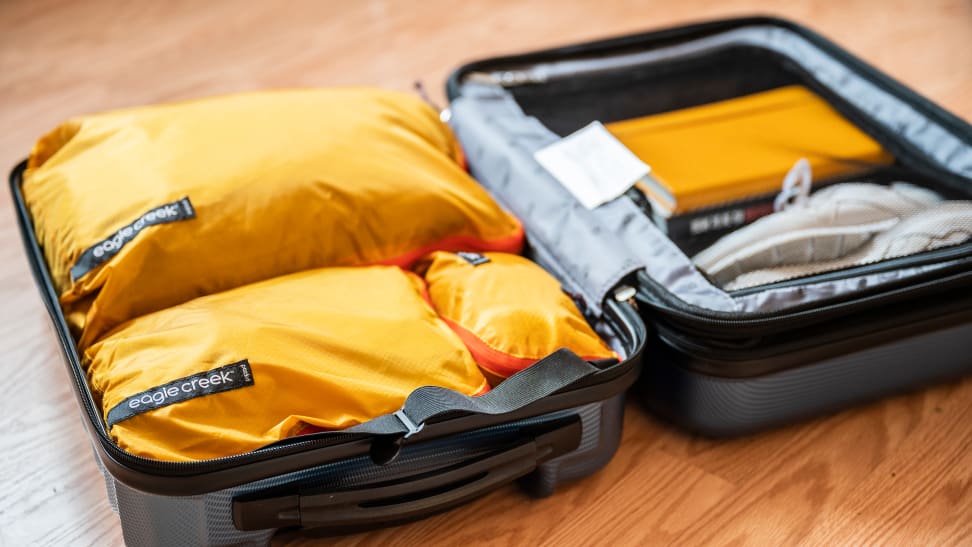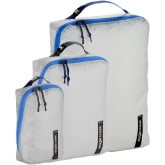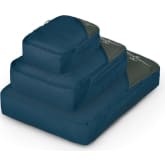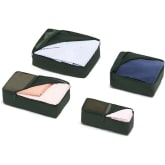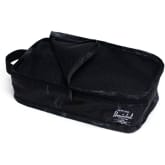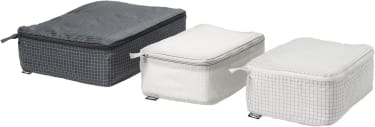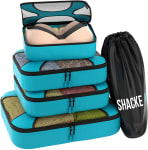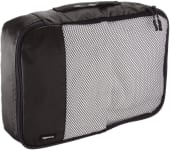Everyone has their own preferences in packing cubes. For some, it's of utmost importance to cram as many clothes as possible into the smallest space. Others want to organize the contents of their luggage Some want their clothes to fit perfectly and emerge from a suitcase with as few wrinkles as possible.
After extensive research and testing, these are the best packing cubes you can get online now.
What You Should Know About Buying Packing Cubes
What to look for when buying packing cubes depends on what’s most important to you when you travel—organization, wrinkle resistance, compression, or the perfect combination of all three. No matter which of these are a top priority for you, there are a number of general guidelines to keep in mind when shopping for these popular travel accessories.
Size: If you travel light and want to avoid checking a bag, smaller packing cubes are better. If you want multiple outfit changes or have bulky items like sweaters, you’re likely a person that likes to travel with a checked piece of luggage. You’ll be able to benefit from a set of larger packing cubes—especially those with a compression system.
Keep in mind that there is no standard definition of “small”, “medium”, and “large”, so be sure to check the cube set’s measurements to determine if they’re right for you. Finally, don’t forget to confirm that the largest cubes aren’t bigger than the suitcase you plan to put them in.
With this in mind, it’s also important to note that, generally, cubes that hold the most stuff are likely not your best choice.
When packing cubes are too big, you lose the compression and wrinkle-resistance that a tightly-packed cube provides. A half-full packing cube helps keep you organized but otherwise doesn’t provide much benefit over a plain old suitcase. Several smaller cubes are better at keeping things organized.
Versatility: Packing cube sets that offer a variety of cube sizes give you more flexibility for how you pack your bags. Small packing cubes are great for things like charging cords and batteries, snacks, workout clothes, and underwear. Having a mix of cube sizes also makes it easier to separate the clothes you need for different parts of your trip, so you can, for example, keep your beach togs packed up and out of the way until you need them.
In order to optimize your packing cube setup, you might find want to purchase one set of larger cubes and another set of the smaller lightweight ones featured in this guide.
Compression: All packing cubes provide some degree of compression when they’re fully packed, reducing the amount of space that your clothes take up in your suitcase. However, some have an additional compression system to help pack your clothes into an even smaller space. Compression packing cubes work by having an extra zipper built into them that squishes the contents of your fully-packed packing cube to make it thinner.
While a cube’s compression system might help you fit a little more into your suitcase, they’re not magic. You won't gain more than an inch or so of space inside of your luggage. And don’t forget that your packing cube has to be quite full for the compression system to work.
Ripstop: There are many materials used to make packing cubes. The best lightweight packing cubes are typically made from ‘ripstop’ fabric.
What this means is that the fabric has been woven through periodically with thicker threads to reinforce it. This helps make rips and tears less likely to occur and, if they do, keeps them from growing bigger.
Mesh: Being able to see into your packing cubes helps you find items quickly. Medium-weight fabrics are typically opaque, so mesh panels are added as a window into the cubes’ interior. These mesh panels are often billed as “breathable”—but why would clothes in your suitcase need to breathe?
Mesh panels can actually be a drawback, as they can cause dirt, sand, spilled liquid, or stink from dirty laundry to get into your clean clothes. They may also add unnecessary weight and tend not to be as strong as the rest of the packing cube.
Double zippers: Many high-quality packing cubes have double zippers to make closing the cubes, especially when packed full, as easy as possible. Double zippers are especially helpful when packing cubes have square rather than rounded corners, giving you another zipper option if one side gets stuck. And in the event one of the zippers breaks, your cubes are still functional with the second zipper.
Accessibility: Packing cubes that unzip so that the top flap is completely out of the way to make packing and unpacking faster and easier, and are better for preventing wrinkles. If your packing cube doesn’t open very wide, you’ll likely need to do more stuffing rather than placing of your carefully folded or rolled clothes, which takes more time and might mean more wrinkles.
Washability: Ideally, you should be able to toss packing cubes into the washing machine and have no worries about colors running or zippers and seams remaining intact. The ability to handwash cubes in the sink is ok, but not as good. We'd never buy cubes that aren’t washable at all.
If a container of handcrafted Mexican cocoa powder leaks into your suitcase (yes, this has happened to one of our testers), there’s a suspicious smell, or—knock on wood—a bed bug encounter, you'll want to wash those packing cubes. Unless they’re super cheap (like the IKEA ones we tested), we expect packing cubes to survive for many years of frequent washes.
How To Use Packing Cubes
The best way to pack a packing cube is to place a pile of folded (or rolled; you decide) clothes on the cube’s bottom and then, once it’s quite full, zip the cube partially closed. You should still have room to add a few more rolled items before zipping the tightly packed cube fully closed.
More Articles You Might Enjoy
